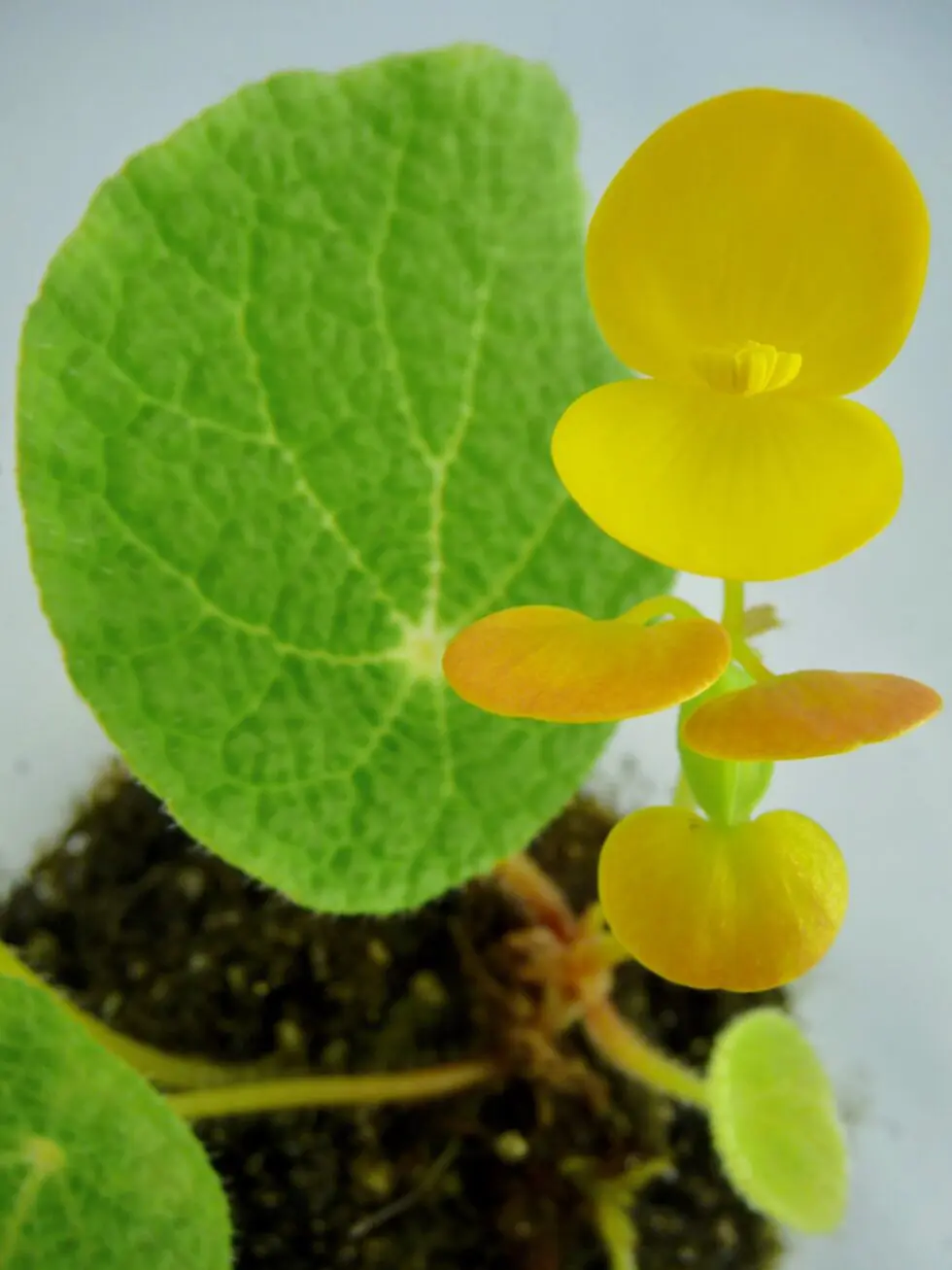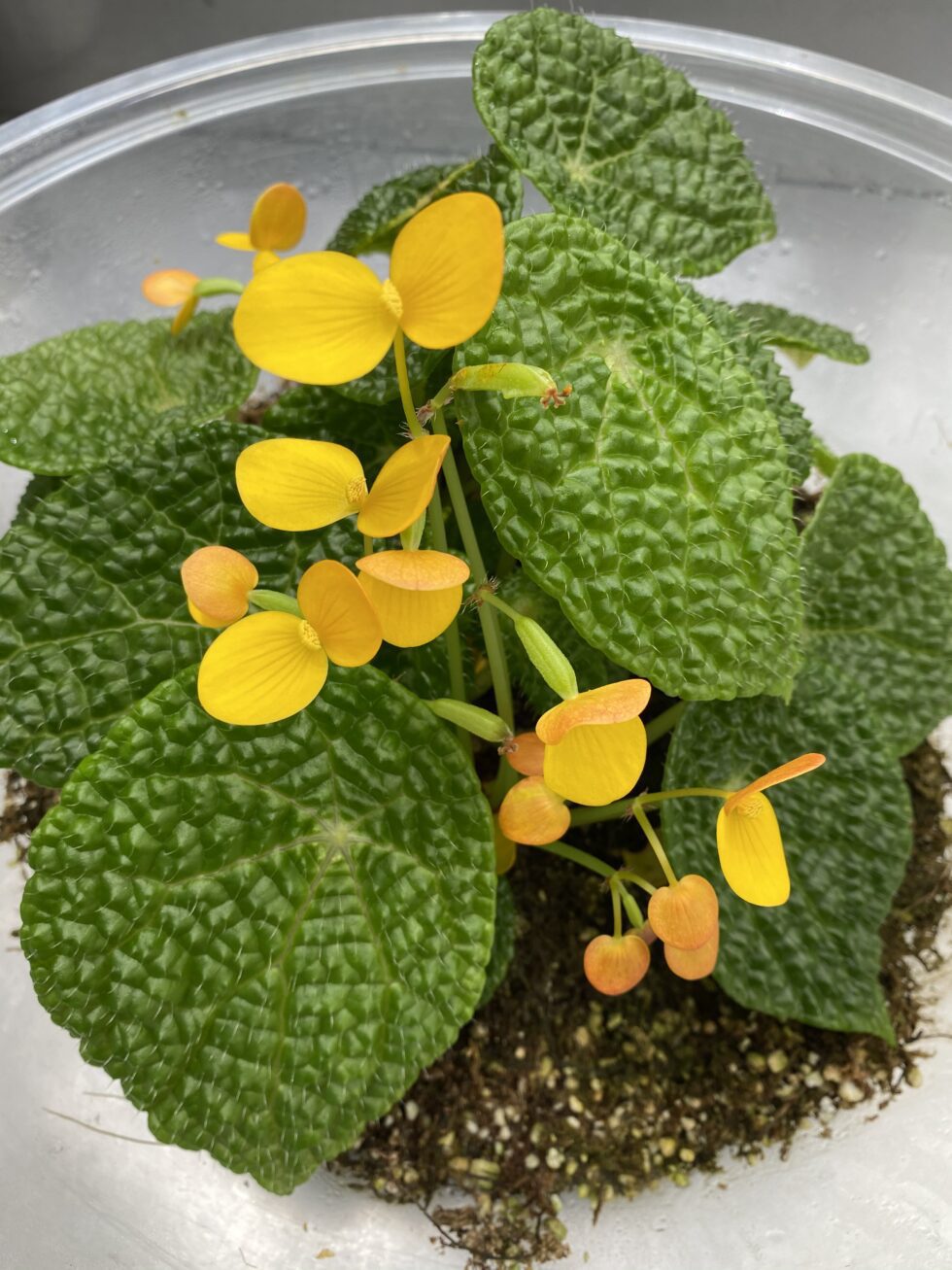B. microsperma | Photo: Don Miller
MEMBER NAME: In Search of Small Things, Pacific Northwest
SPECIES NAME: Begonia microsperma
[1] SHADE, SEMI-SHADE, SUN, TERRARIUM, FLUORESCENT LIGHTS
Initially I tried growing this as a houseplant in a south facing window and high ambient humidity, but after 2-3 months it was down from a robust plant of 6 or so leaves to only one leaf. It is doubtful whether it can be grown outside a terrarium long term. After this fiasco, I moved it to a terrarium that has minimal ventilation (small vent for passive ventilation) and it recuperated slowly. It is housed under ho T5’s with LED bulbs sunlight supply brand that are kept on for 12 hours/day. The base of the plant sits about 20” from the light, with the topmost leaves only a few inches from the light.
[2] TYPE OF GROWING MEDIUM USED
When I received this plant it was potted in sphagnum, but I moved it to 100% clay substrate. It has grown very quickly in this medium, which has been seasonally flooded for months at a time. From the IUCN Red List, “Begonia microsperma is a lowland forest herb apparently restricted to sheer spray-soaked rock faces or on trees near waterfalls. It has greenish yellow flowers and leaves which are peltate, elliptic-ovate and 6-18 x 3.3-12 cm, the upper surfaces with numerous conical bullae, each tipped with a bristle hair (Sosef 1994).” Given this info, it is not surprising that it tolerates somewhat stagnant conditions. The clay it’s growing in, is infield conditioner used on baseball fields. It is called ‘triple play’ and is very red.
[3] TYPE OF FERTILIZER AND FREQUENCY OF FEEDING
No fertilizer ever used, however it resides in a terrarium with a small group of frogs and so likely consumes fecal matter from these animals regularly.
[4] MOISTURE REQUIREMENTS AND METHOD OF SUPPLYING APPROPRIATE AMOUNT OF WATER
Infrequent waterings due to high humidity in terrarium. Maybe monthly water, but not more.
[5] PEST PROBLEMS AND HOW YOU TREATED THESE
No pests thus far.
[6] NOTE YOUR EXPERIENCE OF SETTING SEEDS AND GROWING SEEDS OF YOUR SPECIES
Have not collected seed.
[7] NOTE YOUR EXPERIENCE OF VEGETATIVE PROPAGATION
It grows very slowly from leaves, and in my experience takes at least 6 months to see signs of new leaves. Happy Frog potting soil was used for leaf propagation and leaves proved to be robust and resistant to rotting. New plants take upwards of 8 months to look like much, and upwards of a year to gain any significant size.
B. microsperma | Photo: Don Miller



